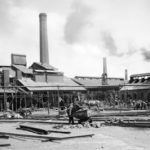Northeast Denver neighborhood is nation’s most polluted
Two Superfund sites and six brownfield sites are legacies of the Globeville neighborhood’s industrial heritage.
Reprinted from Denver Post
That hasn’t dampened enthusiasm for development, however.
Normally, high levels of past contamination and heavy industry nearby would weaken or kill off the surrounding housing market. But northeast Denver’s 80216 ZIP code, home to the Globeville and Elyria-Swansea neighborhoods and the River North Art District and National Western complex, is experiencing some of the strongest developer interest and home price gains along the Front Range.
‘It is a hot mess. A lot of people developing are cashing in on the market,” said Candi Cdebaca, a fourth-generation Swansea resident whose family has fought for years to ensure that part of Denver gets the remediation needed.
To figure out where the highest environmental risks exist for property owners, ATTOM Data Solutions looked at 8,642 ZIP codes with more than 1,000 homes. It then looked at the number of Superfund sites, brownfield sites, active polluters and overall air quality to create an environmental hazard index.
The four measures combined gave the 80216 ZIP code a score of 455 on the environmental hazard index, putting it ahead of the 92408 area of San Bernardino, Calif., Baltimore’s 21226 ZIP, and the 90670 area of Los Angeles.
Denver’s most at-risk neighborhoods scored even worse than the 14303 ZIP code-area near the old Love Canal site in New York, considered one of the nation’s worst environmental disasters.
Many of the area’s environmental wounds came in the late 1800s, when smelters belched lead, arsenic and heavy metals and produced slag that contaminated the soil. Two Superfund sites and six brownfield sites are legacies of that industrial heritage.
A history of past contamination is common among areas across the country that currently rank high for environmental risk, and in many of those places, the generators of contamination are long gone. But that part of northeast Denver still has two dozen active polluters, as defined by the 2015 Toxics Release Inventory. That pushed the risk score over the top, even with a decent air quality score.
Typically, environmental hazards are associated with depressed home values, slower turnover, and higher foreclosure rates, said Daren Blomquist, senior vice president at ATTOM Data Solutions.
“Home values hold up better when you don’t have the presence of a Superfund site,” Blomquist said.
![]()



Comments
Northeast Denver neighborhood is nation’s most polluted — No Comments
HTML tags allowed in your comment: <a href="" title=""> <abbr title=""> <acronym title=""> <b> <blockquote cite=""> <cite> <code> <del datetime=""> <em> <i> <q cite=""> <s> <strike> <strong>